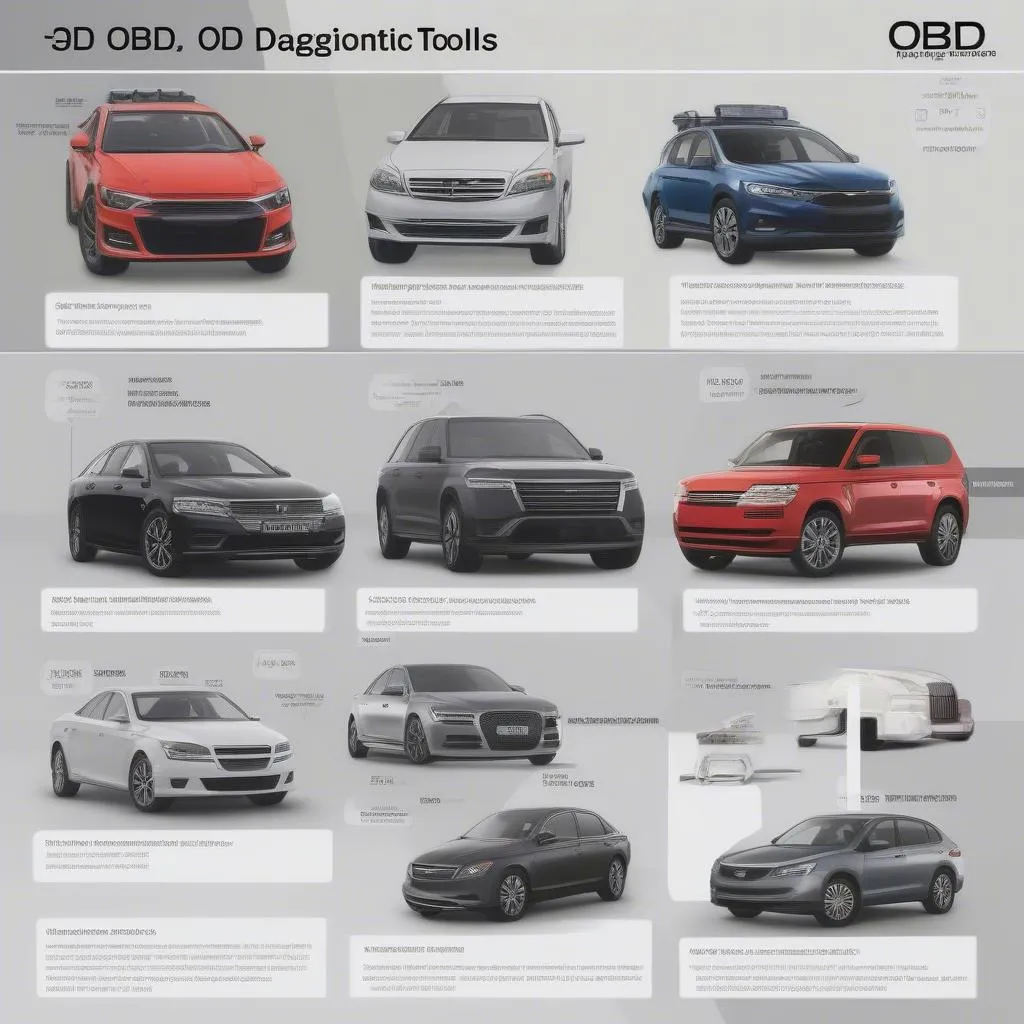Ever felt like your car was speaking a language you didn’t understand? That blinking “check engine” light can be pretty cryptic, right? Well, it turns out your car has been sending messages all along, and with the right tool, you can decipher them. Enter **Obd Diagnostic Tools**, your key to unlocking your car’s hidden language.
Imagine this: you’re about to embark on a road trip, but your trusty car decides to throw a tantrum. The “check engine” light is glaring, and you’re miles from the nearest mechanic. Frustrating, right? But what if you had a device that could tell you exactly what’s wrong, saving you time, money, and a whole lot of worry? That’s the power of OBD diagnostic tools.
What Exactly are Obd Diagnostic Tools, and Why Should You Care?
Let’s break it down. OBD stands for **On-Board Diagnostics**. Think of it as your car’s internal computer system. Since the early 1980s, cars have come equipped with this system, which continuously monitors various components and functions.
An **OBD diagnostic tool** (also known as a **car code reader** or **scan tool**) acts as a translator between you and your car’s computer. By plugging into the OBD port (usually located under the dashboard), these tools can:
- Read and interpret Diagnostic Trouble Codes (DTCs): Remember that cryptic “check engine” light? It’s triggered by DTCs stored in your car’s computer, each code representing a specific issue.
- Display real-time engine data: This includes information like engine speed, coolant temperature, oxygen sensor readings, and more, giving you a snapshot of your engine’s health.
- Reset the “check engine” light: Once you’ve addressed the issue, an OBD tool can clear the DTC and turn off the warning light.
 car-code-reader
car-code-reader
Why This Matters to You
Beyond the obvious benefit of saving a potential breakdown, OBD diagnostic tools empower car owners. They offer:
- Early Problem Detection: Identify issues before they escalate, saving you from costly repairs down the line.
- Informed Repair Decisions: No more relying solely on your mechanic’s diagnosis. You have the information to understand the problem and make informed choices.
- DIY Potential: For the mechanically inclined, OBD tools open the door to diagnosing and even fixing some issues yourself.
Choosing the Right OBD Diagnostic Tool: A World of Options
Just like cars, OBD diagnostic tools come in a variety of shapes and sizes. Let’s navigate this world together:
1. Basic Code Readers:
- Perfect for: Reading and clearing DTCs, especially for older vehicles.
- Pros: Affordable, easy to use.
- Cons: Limited functionality, may not work with newer cars.
2. Advanced OBD Scanners:
- Perfect for: DIY enthusiasts and professionals who need more in-depth data.
- Pros: Access to live data stream, advanced diagnostics, and sometimes even manufacturer-specific codes.
- Cons: Can be expensive, require some technical knowledge.
3. Smartphone/Tablet-Based Scanners:
- Perfect for: Tech-savvy users who want portability and convenience.
- Pros: Compact, user-friendly apps, often offer additional features like trip logging and performance tracking.
- Cons: Reliant on your phone/tablet’s battery, may require a subscription for full functionality.
 types-of-obd-tools
types-of-obd-tools